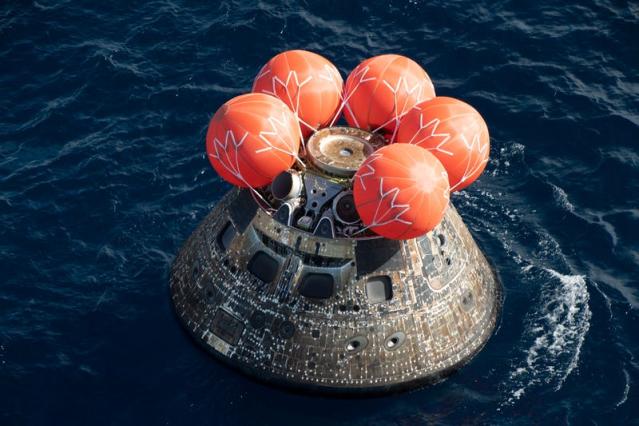The Orion capsule from NASA has managed a successful splashdown in the ocean just of the coast of the Mexican Island of Guadalupe in the wake of a sting of almost 26 days of travel to make it to the Moon and back.
This voyage was just a single part of Artemis I, a plan for a series of long-running missions to develop human exploration of both Mars and the Moon.
Splashdown! 🪂💦@NASA_Orion has returned, concluding the nearly 26-day #Artemis I mission that took Orion from @NASAKennedy's Launch Pad 39B to a record-breaking 268,563 miles from Earth, into lunar orbit then landing safely in the Pacific Ocean.
Congrats, Orion! Go Artemis! pic.twitter.com/b4gY3pgwyl
— Boeing Space (@BoeingSpace) December 11, 2022
The Orion spacecraft separated from the crafts service module at roughly 11:00 a.m. CT in order to get ready for its return trip to Earth. The service module ended up burning up in the atmosphere as it came back to Earth, while Orion descended over the Pacific Ocean in a splashdown that was parachute-guided.
“Parachute deployment begins at an altitude of about five miles with three small parachutes pulling the forward bay covers away,” stated NASA in its subsequent press release. “Once the forward bay cover separates, two drogue parachutes will slow and stabilize the crew module for main parachute deployment. At an altitude of 9,500 feet and a spacecraft speed of 130 mph, three pilot parachutes will lift and deploy the main parachutes to slow Orion to a landing speed that ensures astronaut safety for crewed missions.”
In the wake of landing in the ocean, the module is now expected to be subjected to expansive testing and be moved to the U.S. Naval Base San Diego for its inspection. A full new conference for post-mission results is slated to take place on Sunday.
Back on the 5th of December, Orion finished its last fly-by of the moon prior to starting its return trip to Earth. Before this last pass over the surface of the Moon, Orion orbited around the moon in a trip that has been marked as longer than any spacecraft designed to ferry humans. The entire trip ended up surpassing well over 1.3 million miles.
The Orion spacecraft from NASA made the trip to the Moon in the first lunar rock launch since the final Apollo mission well over 50 years ago.
The Artemis 1 mission launched the Space Launch System (SLS), which has been marked as the most powerful rocket in the world, in an entire uncrewed flight at roughly 1:47 a.m. Eastern Time on Wednesday, November 16, at NASA’s Kennedy Space Center in Florida from Launch Pad 39B.
“What an incredible sight to see NASA’s Space Launch System rocket and Orion spacecraft launch together for the first time. This uncrewed flight test will push Orion to the limits in the rigors of deep space, helping us prepare for human exploration on the Moon and, ultimately, Mars,” explained Bill Nelson, NASA Administrator in the wake of the liftoff.

